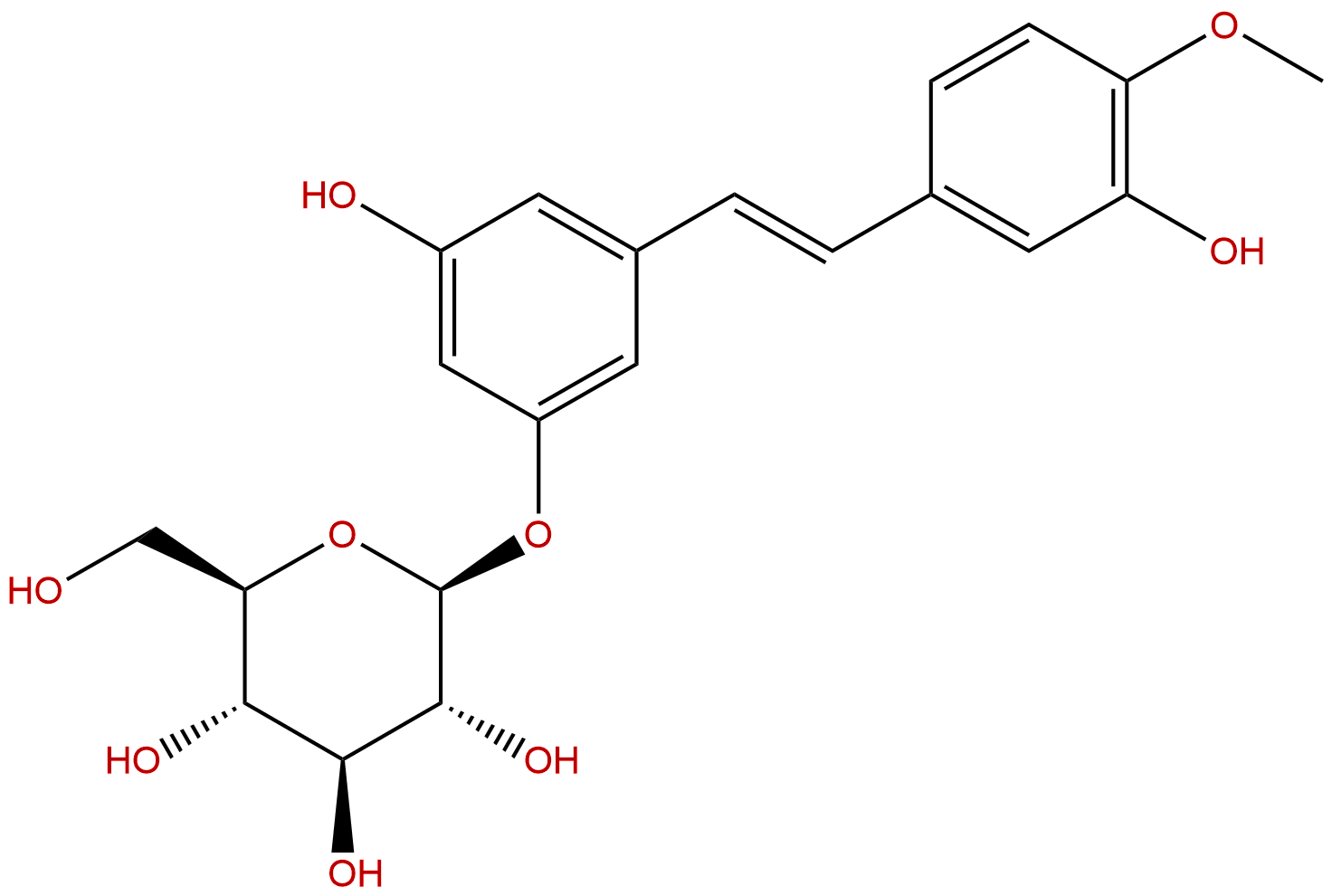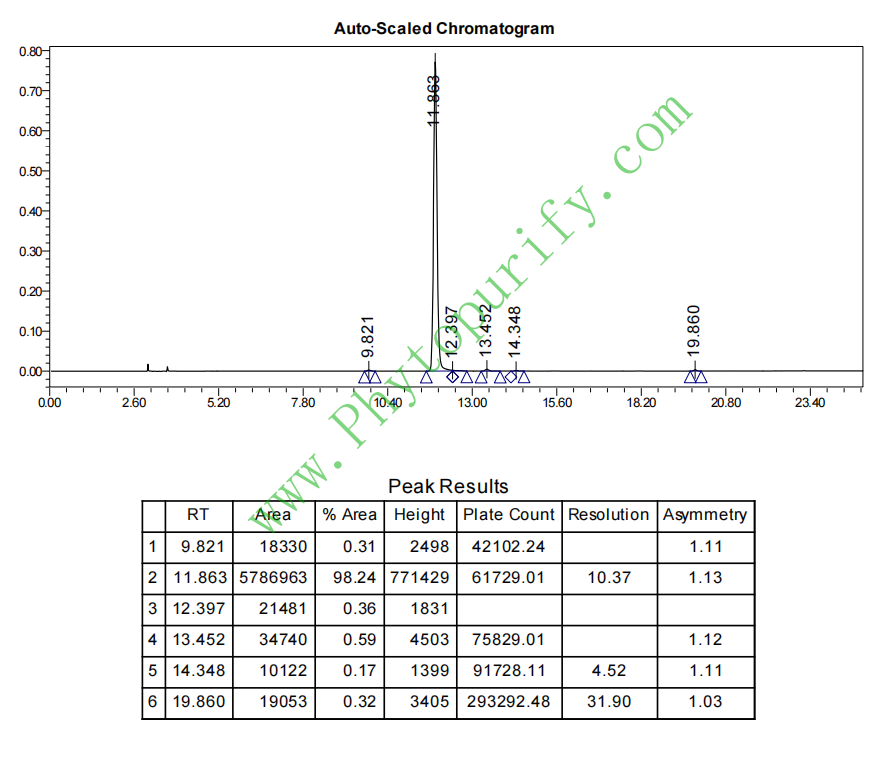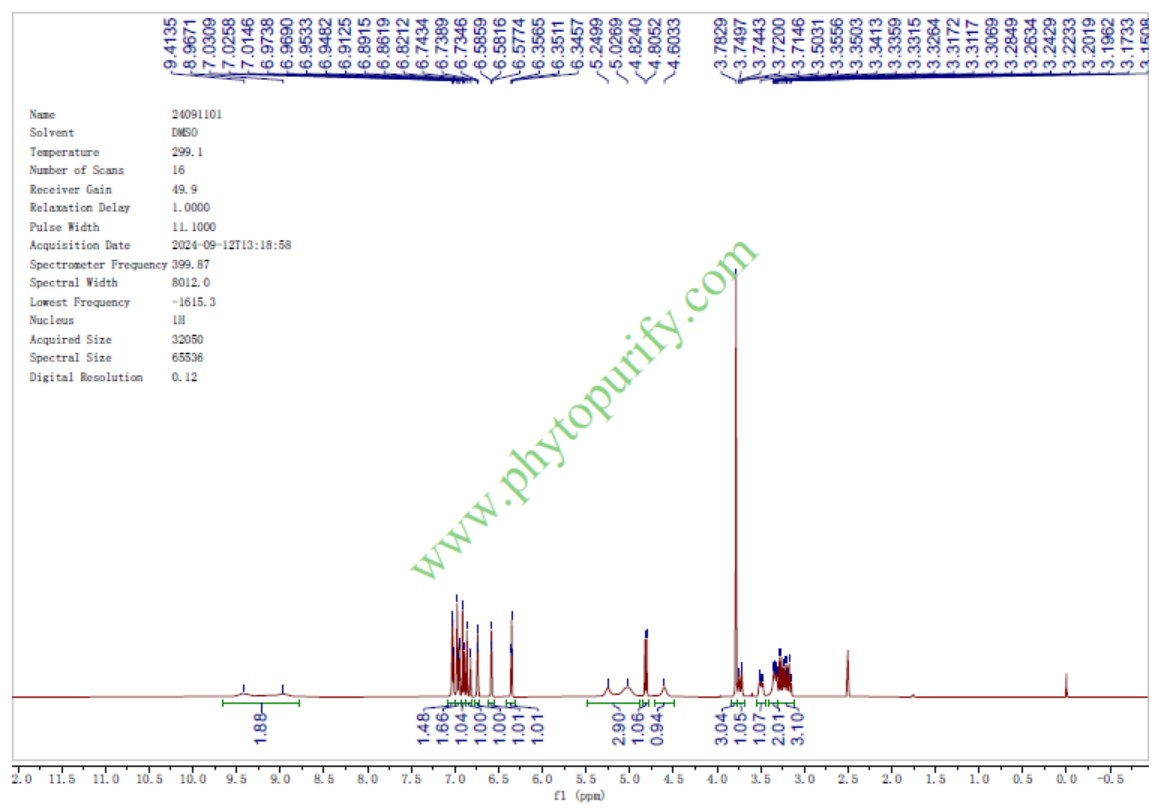
RhapontinCAS No.:155-58-8
|
||||||||||
 |
|
|
||||||||

| Catalogue No.: | BP1207 |
| Formula: | C21H24O9 |
| Mol Weight: | 420.414 |
Product name: Rhapontin
Synonym name: Ponticin; Rhaponticin
Catalogue No.: BP1207
Cas No.: 155-58-8
Formula: C21H24O9
Mol Weight: 420.414
Botanical Source: Rheum hotaoense
Physical Description:
Type of Compound: Stibene glucosides
Purity: 95%~99%
Analysis Method: HPLC-DAD or/and HPLC-ELSD
Identification Method: Mass, NMR
Packing: Brown vial or HDPE plastic bottle
Storage: Store in a well closed container, protected from air and light. Put into refrigerate or freeze for long term storage.
Whenever possible, you should prepare and use solutions on the same day. However, if you need to make up stock solutions in advance, we recommend that you store the solution as aliquots in tightly sealed vials at -20℃. Generally, these will be useable for up to two weeks.
The product could be supplied from milligrams to grams
Inquire for bulk scale.
Description:
Rhaponticin(Rhaponiticin) has a noticeable antidiabetic effect and could be potentially used as a new agent to treat type 2 diabetes mellitus and its complications, it can alleviate liver steatosis and improve blood glucose and lipid profiles in KK/Ay diabetic mice.
References:
Planta Med. 2009 Apr;75(5):472-7.
Rhaponticin from rhubarb rhizomes alleviates liver steatosis and improves blood glucose and lipid profiles in KK/Ay diabetic mice.
We isolated several stilbene compounds including rhaponticin (Rhaponiticin,3',5-dihydroxy-4'-methoxystilbene 3- O-beta- D-glucopyranoside) from extracts of rhubarb rhizomes. These compounds showed significant hypoglycemic effects in streptozotocin (STZ)-induced type 1 diabetic rats and mice.
METHODS AND RESULTS:
In this study, we investigated the effect of rhaponticin on glucose utilization, lipid metabolism, and liver and heart function in a KK/Ay type 2 diabetic mouse model. The results showed that oral administration of rhaponticin (125 mg/kg) significantly reduced blood glucose levels and improved oral glucose tolerance of KK/Ay diabetic mice. Elevated plasma triglyceride (TG), low density lipoprotein (LDL), cholesterol (CHO), non-esterified free fatty acids (NEFA), and insulin levels were also markedly attenuated. Serum enzymatic activities of lactate dehydrogenase (LDH), creatine kinase (CK), aspartate aminotransferase (AST), and alanine aminotransferase (ALT) in the rhaponticin-treated group significantly decreased in comparison to the untreated model group. Livers of rhaponticin-treated mice had relatively normal cellular size and decreased fibrosis and steatosis. In addition, rhaponticin administration caused a remarkable increase in the hepatic glycogen content and a significant reduction in the hepatic triglyceride content.
CONCLUSIONS:
These results indicate that rhaponticin has a noticeable antidiabetic effect and could be potentially used as a new agent to treat type 2 diabetes mellitus and its complications.
HPLC of Rhapontin

HNMR of Rhapontin
